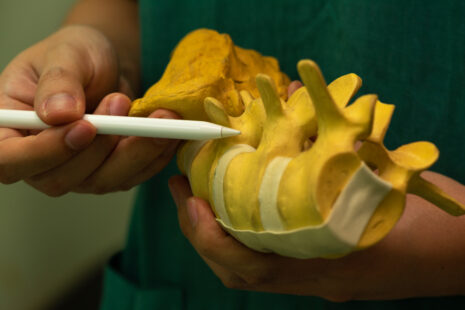Muay Thai is a physically demanding combat sport and martial art that involves a wide range of striking techniques, including punches, kicks, elbows, and knee strikes. Like any contact sport, Muay Thai practitioners are susceptible to various injuries. Some common injuries associated with Muay Thai include:
- Contusions and Bruises: Bruising is common in Muay Thai due to the impact of strikes, especially kicks and punches.
- Sprains and Strains: Ligament and muscle injuries can occur, especially in the wrists, ankles, and knees, as a result of the rapid, forceful movements involved in the sport.
- Fractures: High-impact strikes, especially to the shins, hands, and feet, can lead to fractures. This is one reason why shin conditioning is an essential part of Muay Thai training.
- Cuts and Abrasions: Cuts and abrasions can result from sharp strikes and, in some cases, the absence of appropriate protective gear.
- Head Injuries: Muay Thai generally prohibits head strikes, but accidental headbutts or elbows to the head can result in concussions and facial injuries.
- Joint Injuries: Kicking and striking can put pressure on the knees, elbows, and shoulders, leading to dislocations, hyperextensions, and other joint injuries.
- Tendonitis: Overuse of tendons can lead to conditions such as Achilles tendonitis or wrist tendonitis.
- Oral Injuries: Injuries to the mouth, including broken teeth and lip cuts, can occur if a mouthguard is not used.
- Rib Injuries: Body shots and rib kicks can result in injuries to the ribs, including bruising and fractures.
- Overuse Injuries: Repetitive stress on the body can lead to overuse injuries, such as stress fractures, muscle imbalances, and chronic pain.
- Hydration and Heat-Related Issues: Dehydration and heat exhaustion can occur during intense training or competition and may lead to various health issues.
To reduce the risk of these injuries, Muay Thai practitioners should follow safety guidelines and use appropriate protective gear, such as gloves, shin guards, mouthguards, and headgear, during training and competition. Good technique and conditioning are also essential to prevent injuries, as is listening to your body to avoid overuse injuries. Proper rest and recovery are equally crucial for injury prevention.
Working with experienced coaches who prioritize safety can help minimize the risk of injuries and provide guidance on correct technique and training strategies.




